ARS ELECTRONICA ARCHIVE - PRIX
Der Prix Ars Electronica Showcase ist eine Sammlung, innerhalb derer die Einreichungen der KünstlerInnen zum Prix seit 1987 durchsucht und gesichtet werden können. Zu den Gewinnerprojekten liegen umfangreiche Informationen und audiovisuelle Medien vor. ALLE weiteren Einreichungen sind mit den Basisdaten in Listenform recherchierbar.
VALIE EXPORT
VALIE EXPORT
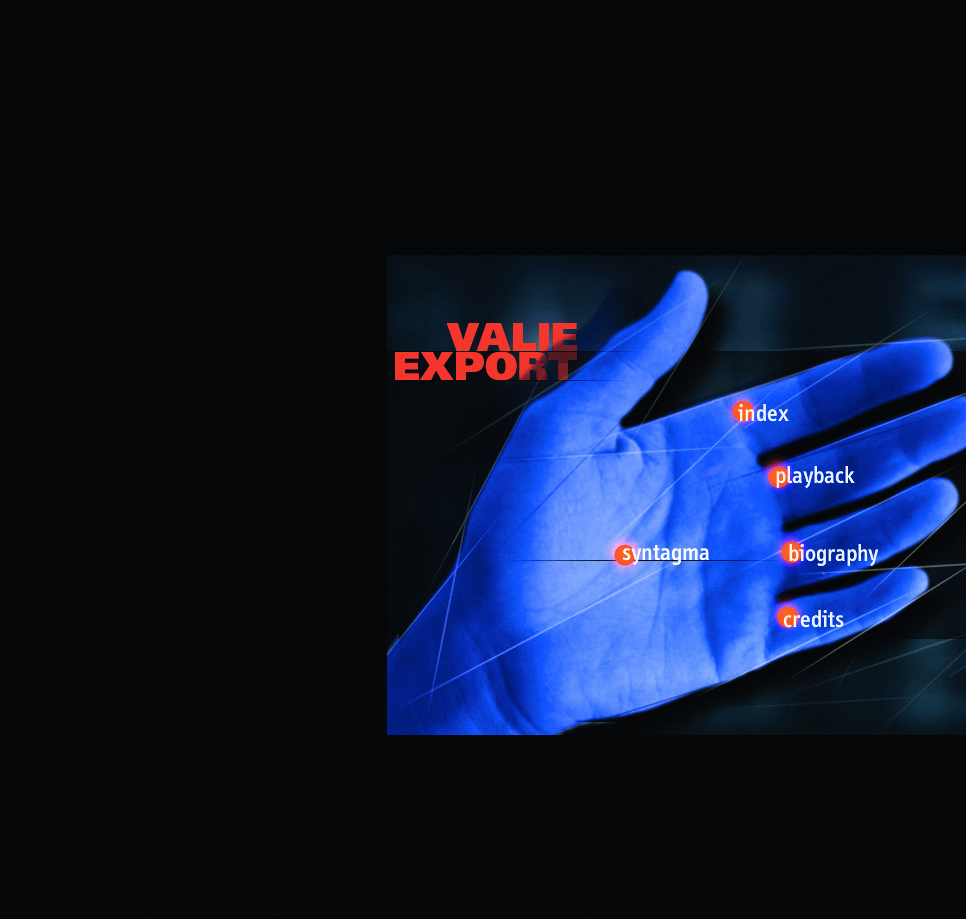
Original: VP_200001_254066_AEC_PRX_2020_VALIEEXPORT_10_2922546.jpg | 966 * 919px | 271.8 KB | VALIE EXPORT, Bilder der Berührungen, CD_ROM 1997/98
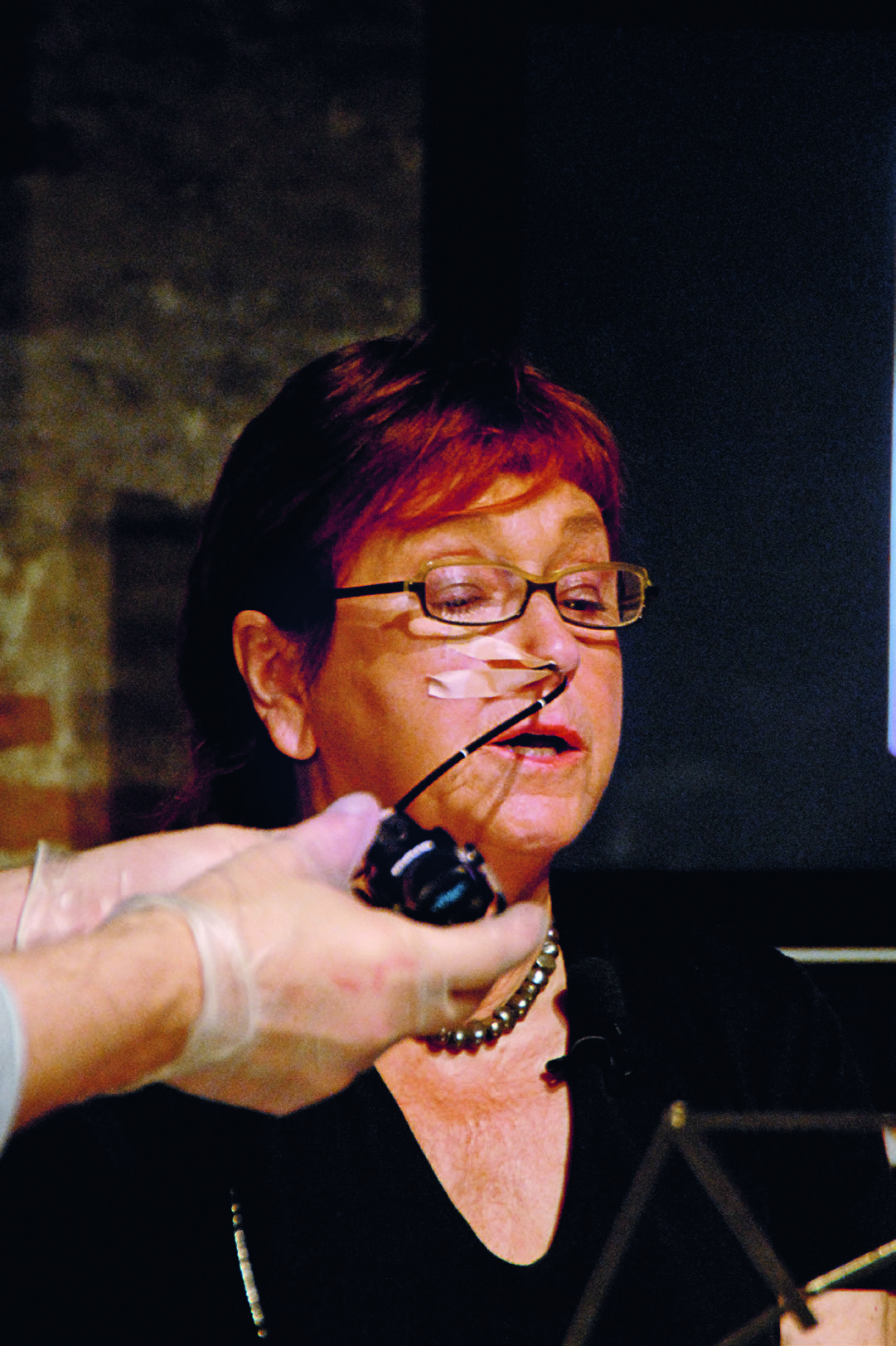
Original: VP_200001_254066_AEC_PRX_2020_VALIEEXPORT_11_2922548.jpg | 1081 * 1624px | 874.9 KB | VALIE EXPORT, The voice as performance, act and body, 2007, Venice Biennale
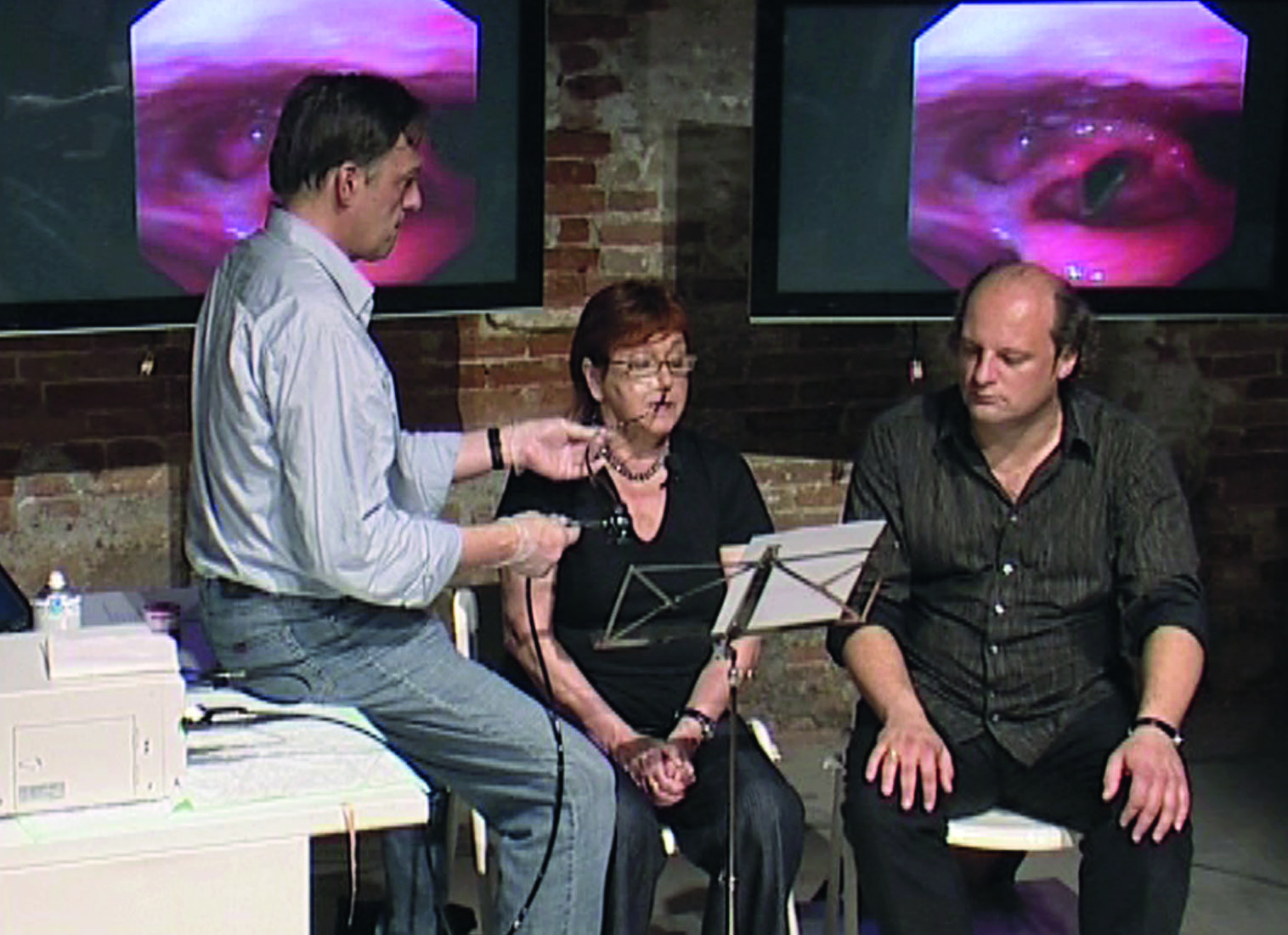
Original: VP_200001_254066_AEC_PRX_2020_VALIEEXPORT_12_2922550.jpg | 1516 * 1101px | 575.7 KB | VALIE EXPORT, The voice as performance, act and body, 2007, Venice Biennale
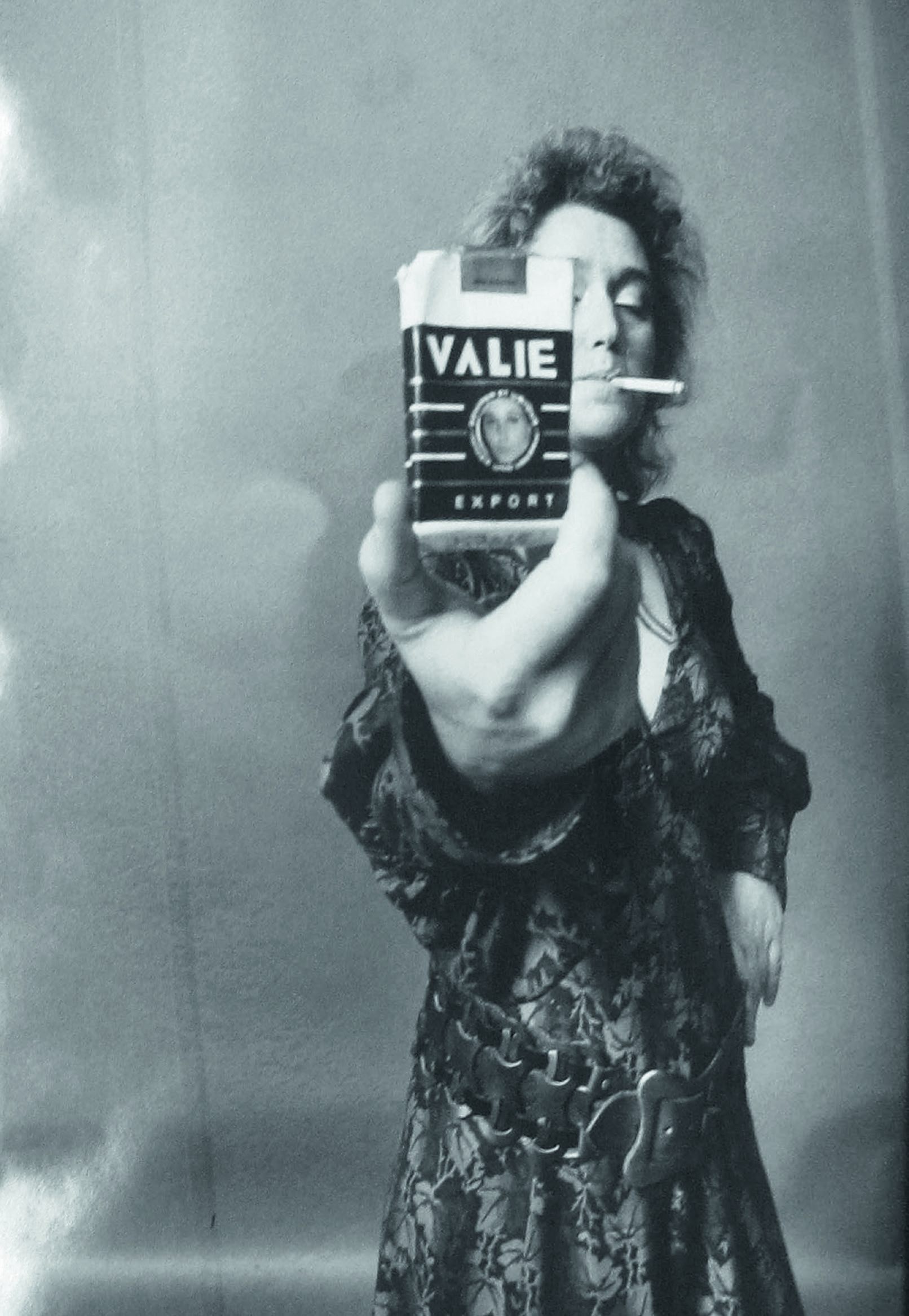
Original: VP_200001_254066_AEC_PRX_2020_VALIEEXPORT_1_2922528.jpg | 1612 * 2333px | 1.7 MB | VALIE EXPORT, VALIE EXPORT - SMART EXPORT, 1970, (object, package of cigarettes, 1967) | Gertraude Wolfschwenger
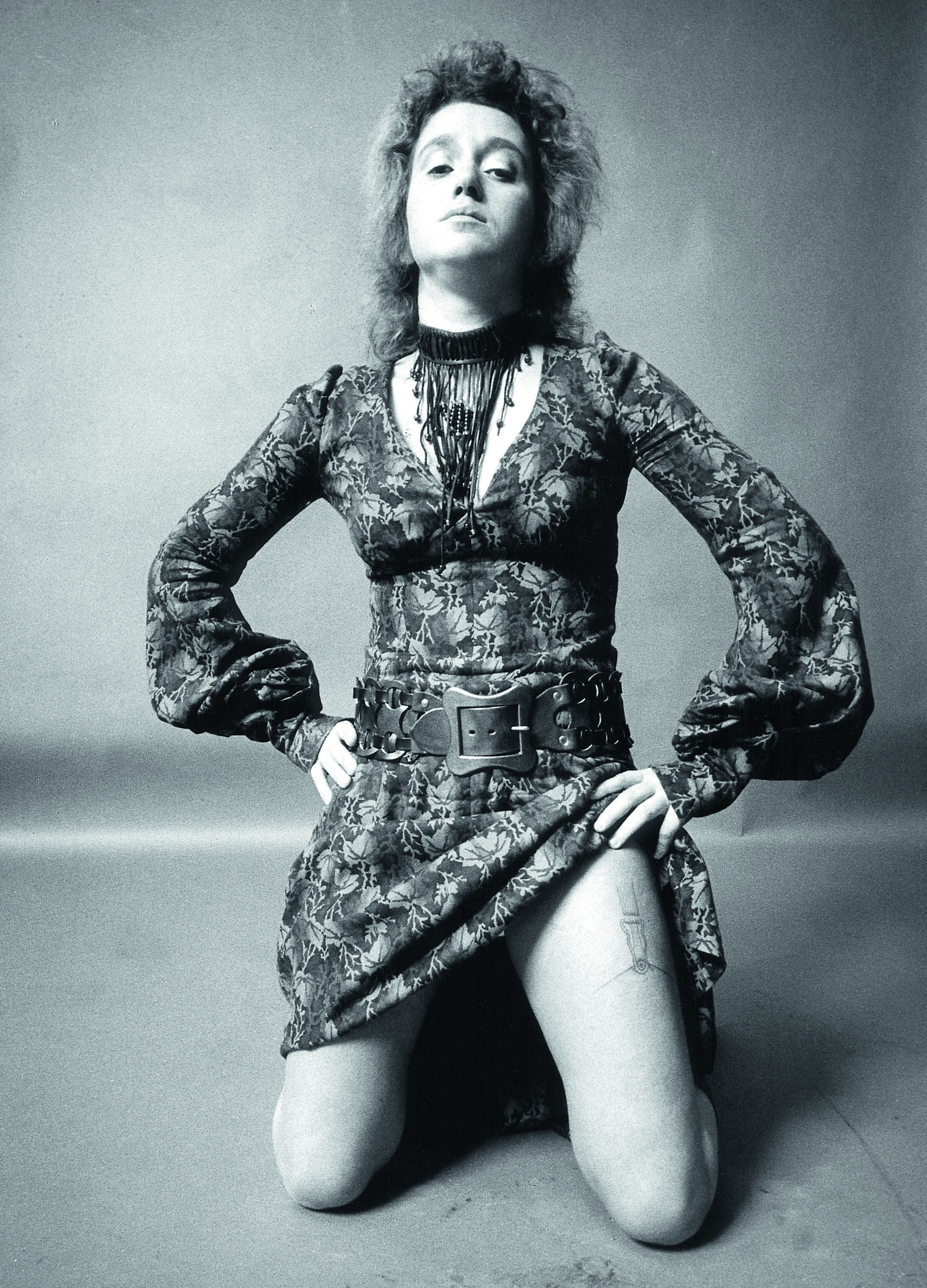
Original: VP_200001_254066_AEC_PRX_2020_VALIEEXPORT_2_2922530.jpg | 2414 * 3353px | 3.0 MB | VALIE EXPORT, Body Sign B, 1970
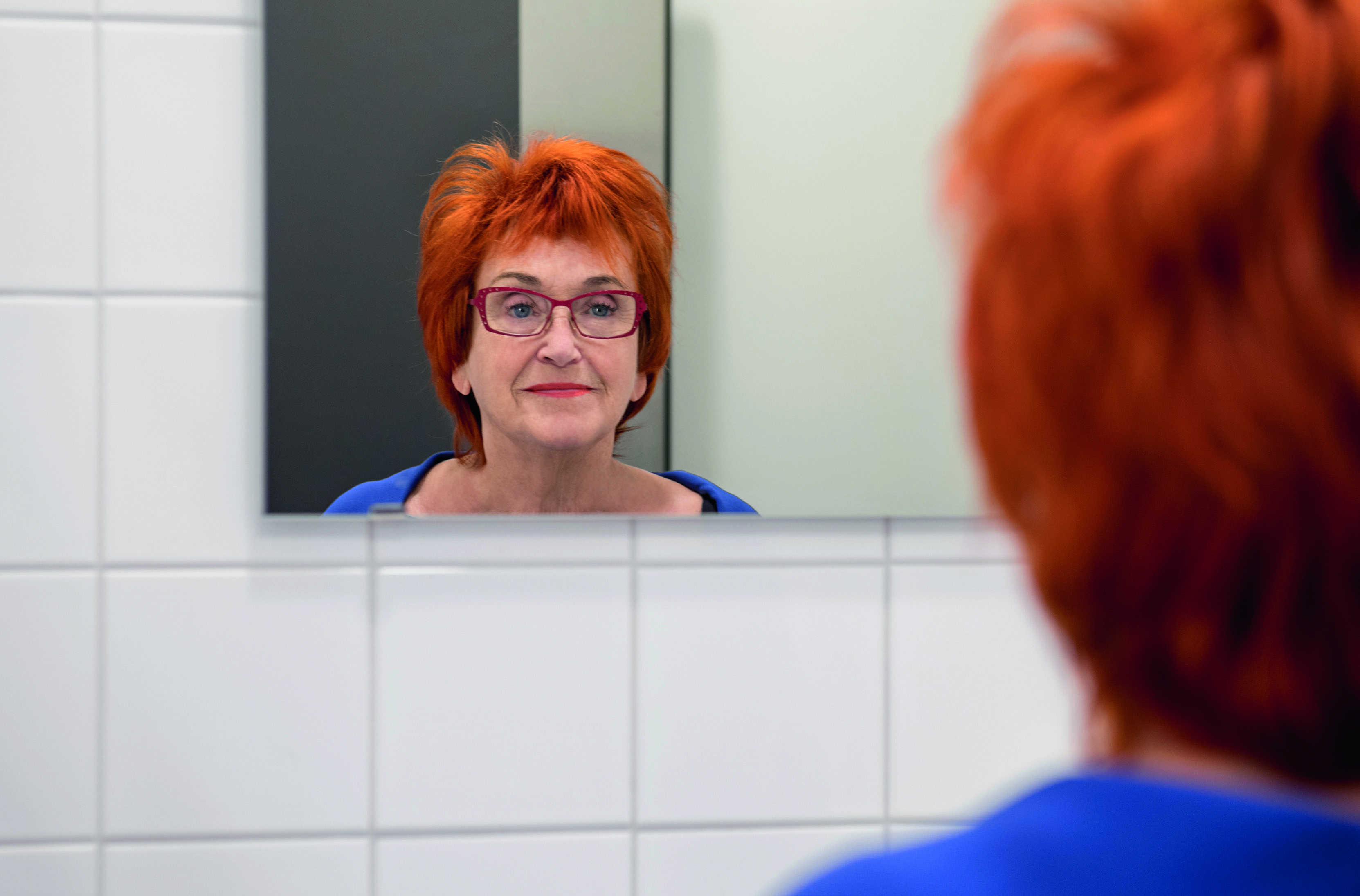
Original: VP_200001_254066_AEC_PRX_2020_VALIEEXPORT_2922526.jpg | 3325 * 2191px | 3.2 MB | VALIE EXPORT | Violetta Wakolbinger, 2017
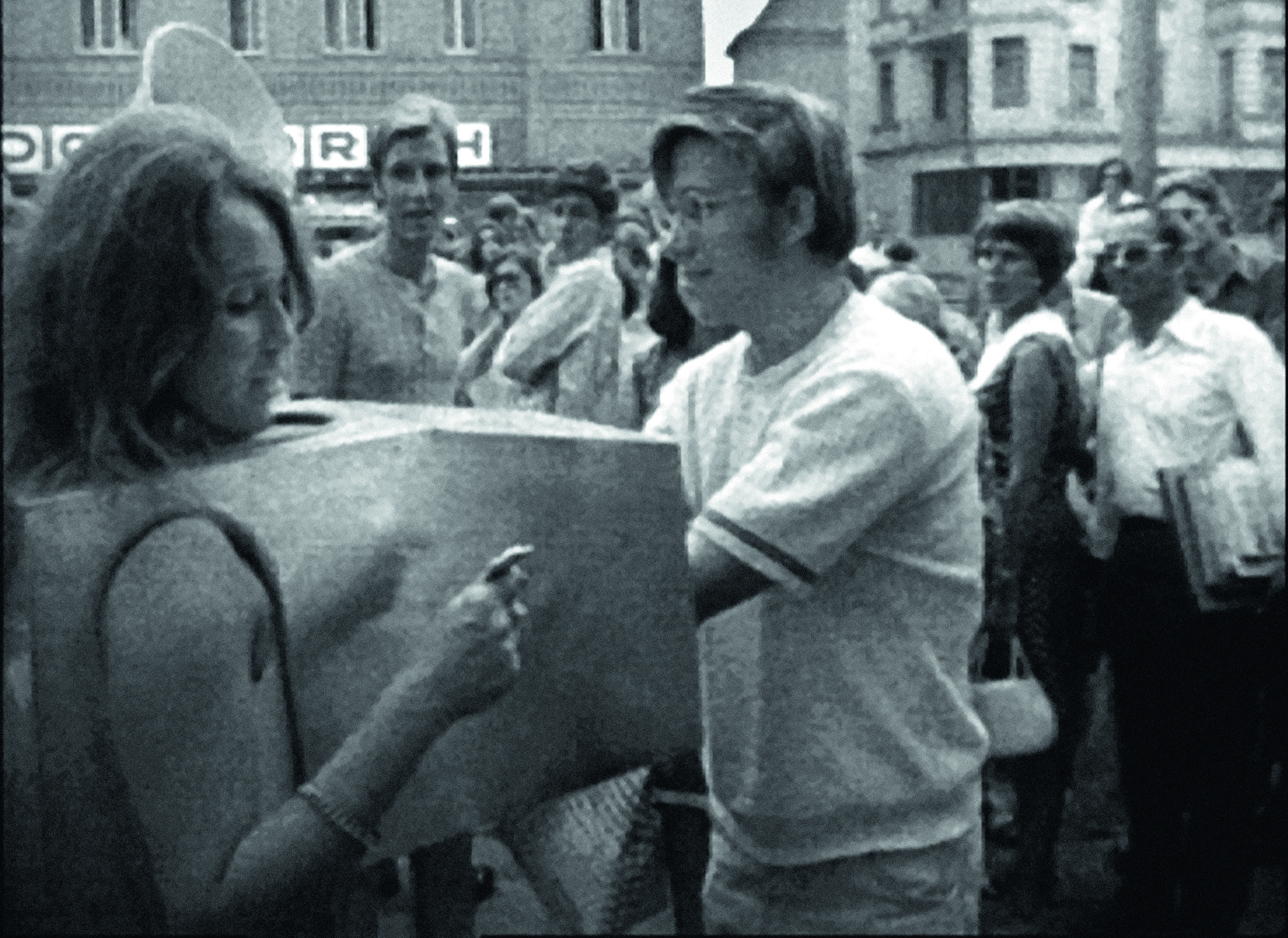
Original: VP_200001_254066_AEC_PRX_2020_VALIEEXPORT_3_2922532.jpg | 2950 * 2148px | 3.0 MB | VALIE EXPORT, TAPP und TASTKINO (TOUCHCINEMA), 1968
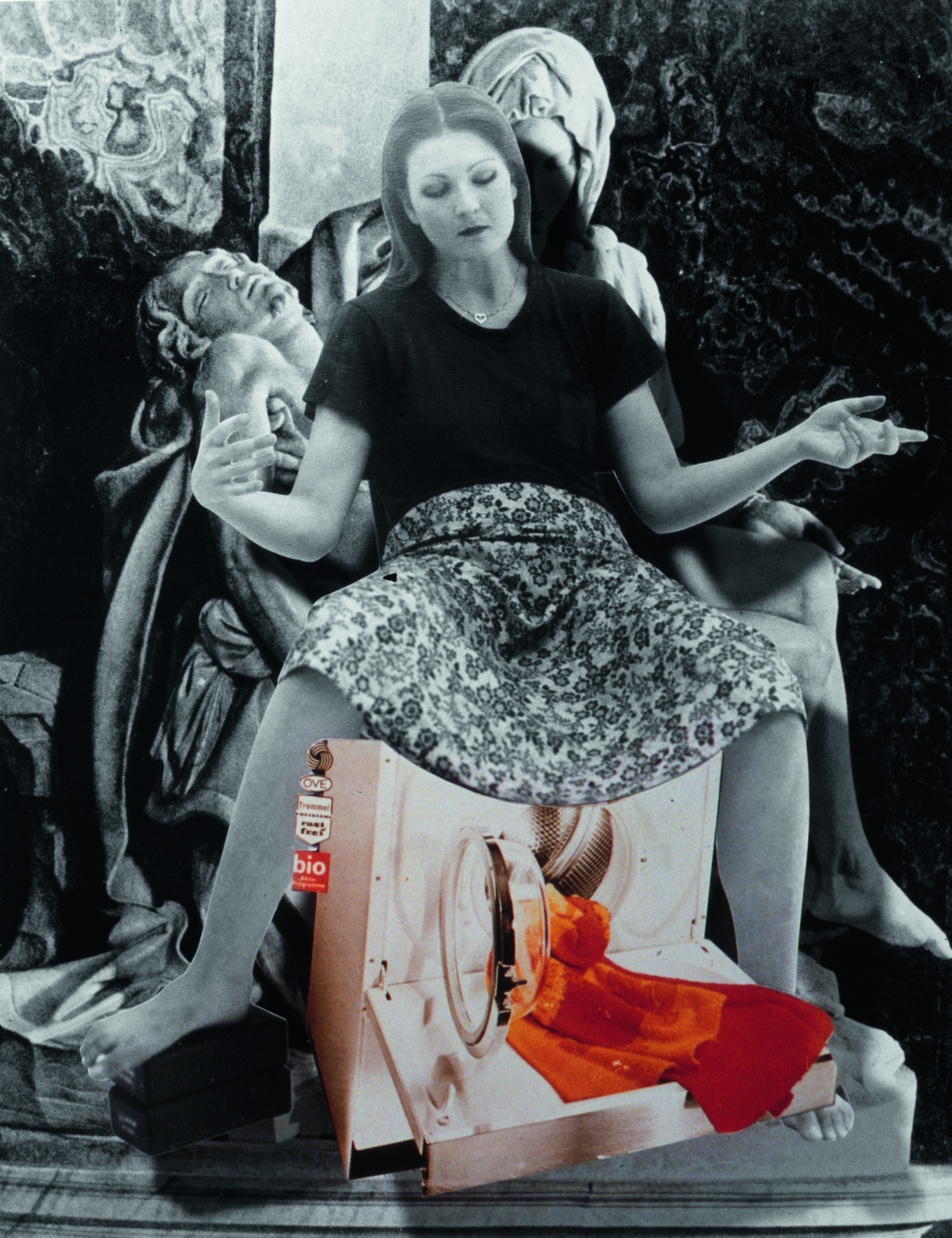
Original: VP_200001_254066_AEC_PRX_2020_VALIEEXPORT_4_2922534.jpg | 2120 * 2756px | 2.7 MB | VALIE EXPORT, VALIE EXPORT, Geburtenmadonna, 1976 (after Michelangelo Buonarroti´s pietá, Madonna della Febbre (1498-1499), Basilica di San Pietro, Rome)
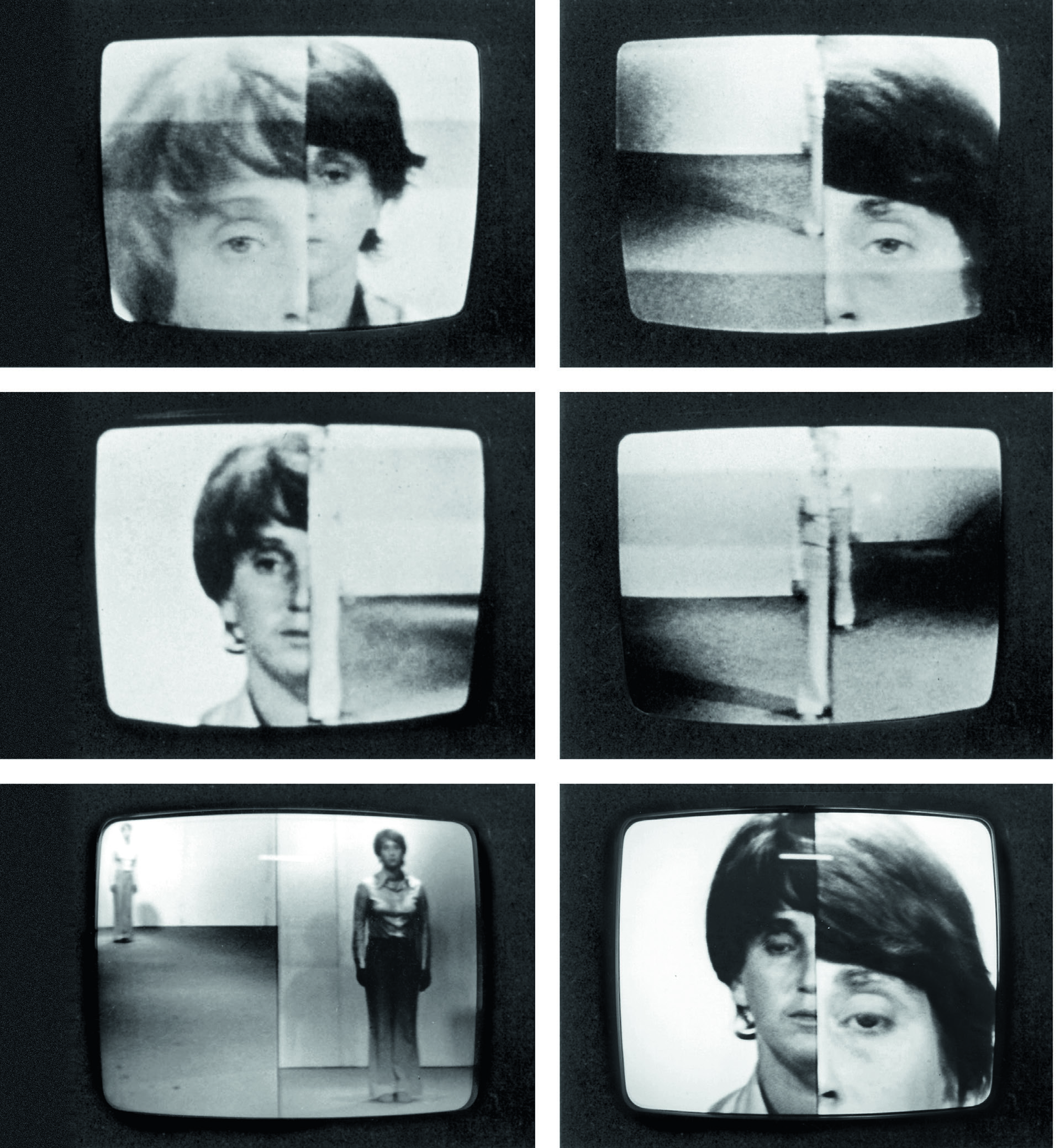
Original: VP_200001_254066_AEC_PRX_2020_VALIEEXPORT_5_2922536.jpg | 1919 * 2079px | 1.3 MB | VALIE EXPORT, Raumsehen und Raumhören, (Space Seeing and Space Hearing), 1974
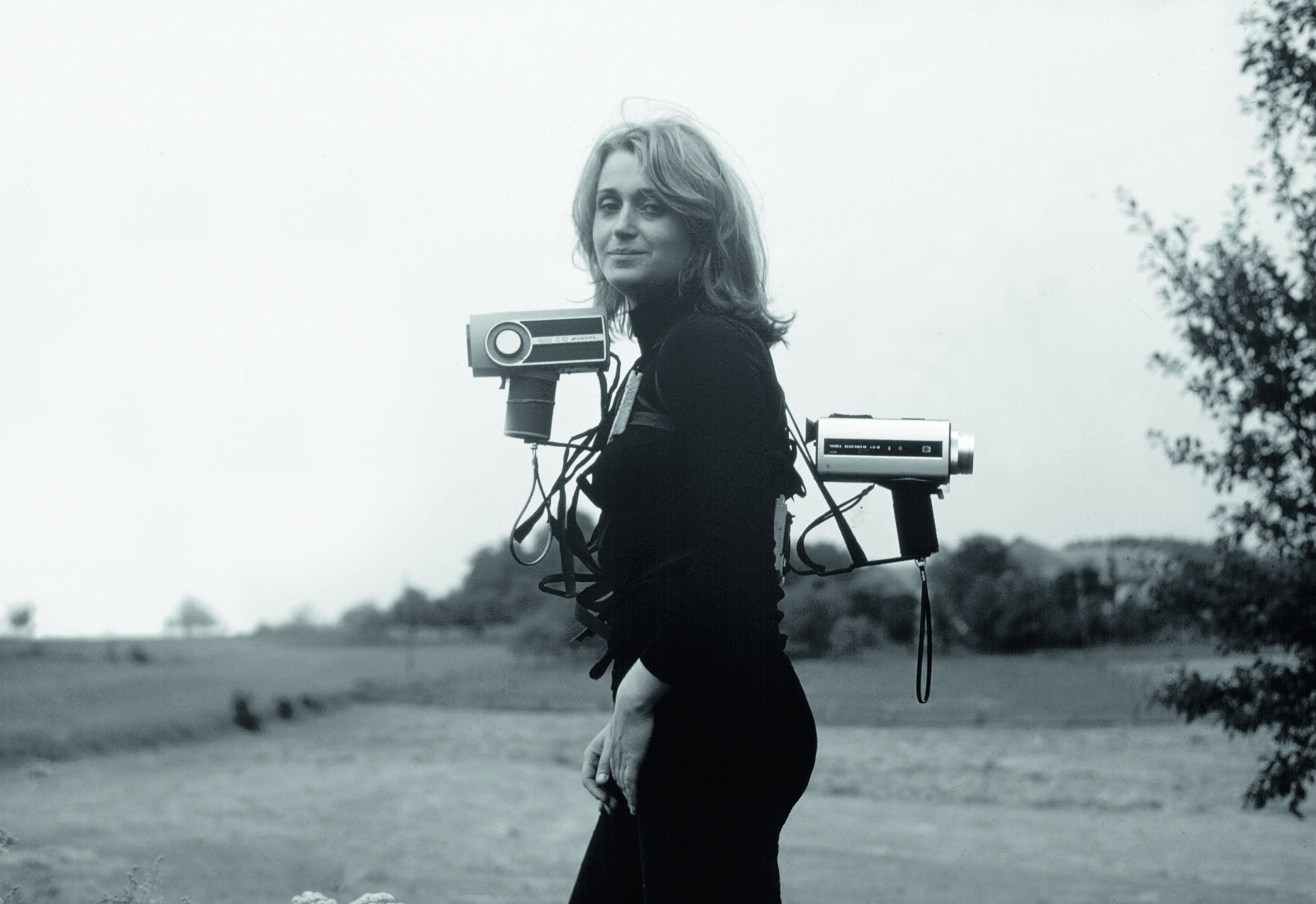
Original: VP_200001_254066_AEC_PRX_2020_VALIEEXPORT_6_2922538.jpg | 1761 * 1210px | 906.4 KB | VALIE EXPORT, Adjungierte Dislokationen (Adjunct Dislocations), 1973
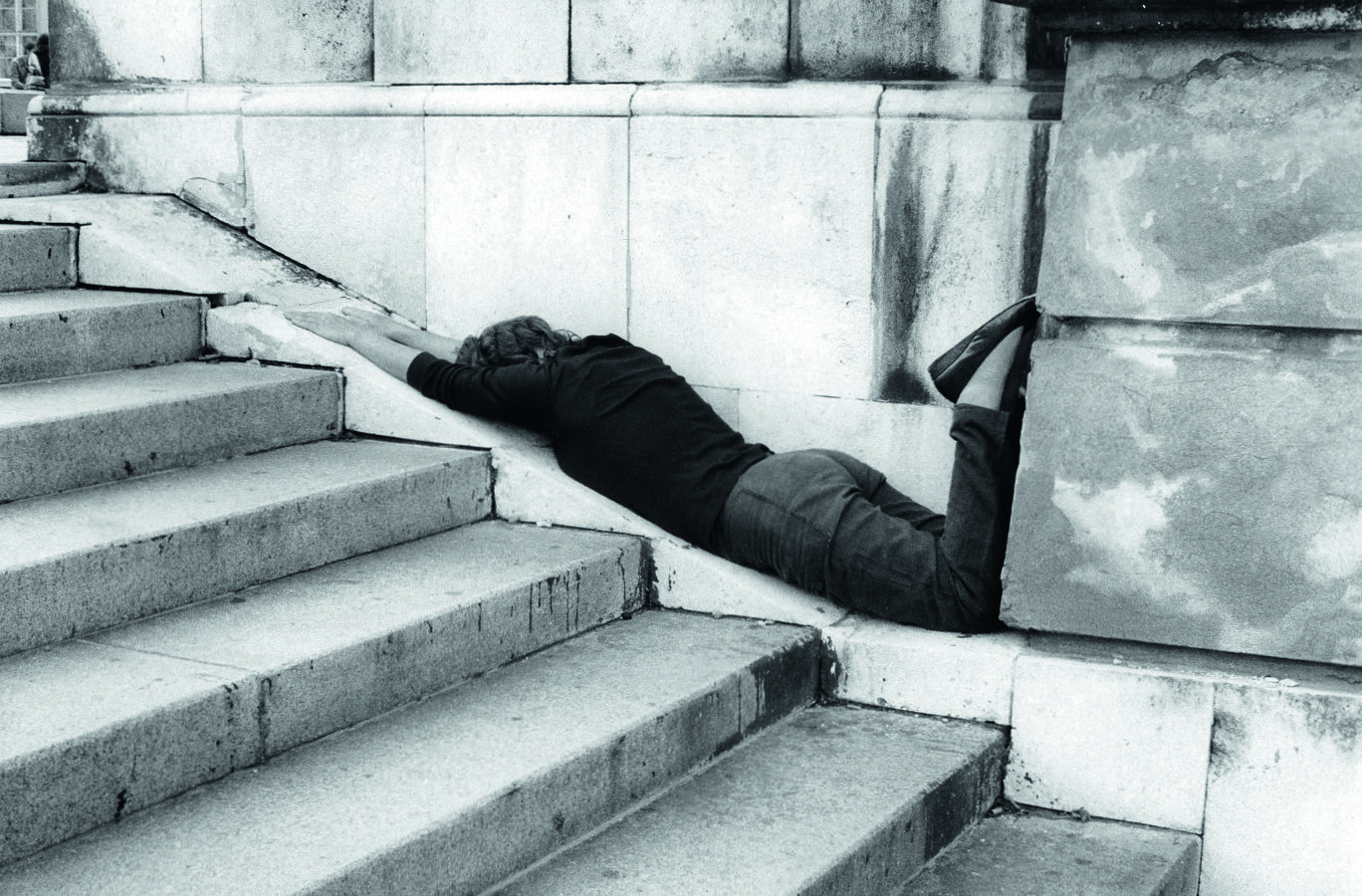
Original: VP_200001_254066_AEC_PRX_2020_VALIEEXPORT_7_2922540.jpg | 1368 * 900px | 1.2 MB | VALIE EXPORT, Pönologie, 1982
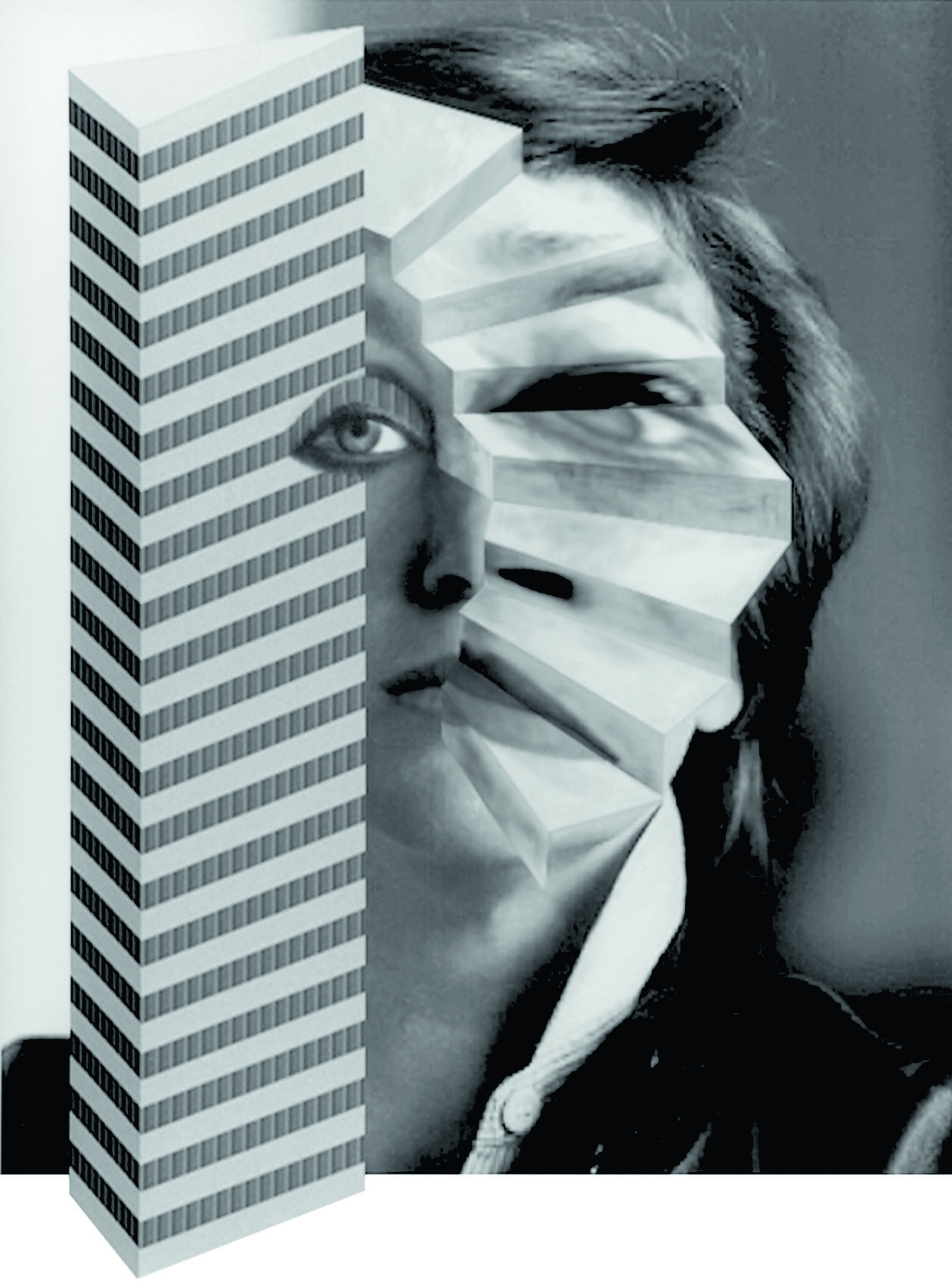
Original: VP_200001_254066_AEC_PRX_2020_VALIEEXPORT_8_2922542.jpg | 1259 * 1701px | 1.0 MB | VALIE EXPORT, Selbstportrait mit Stiege und Hochhaus (Self-portrait with Stairs and High-rise), 1989
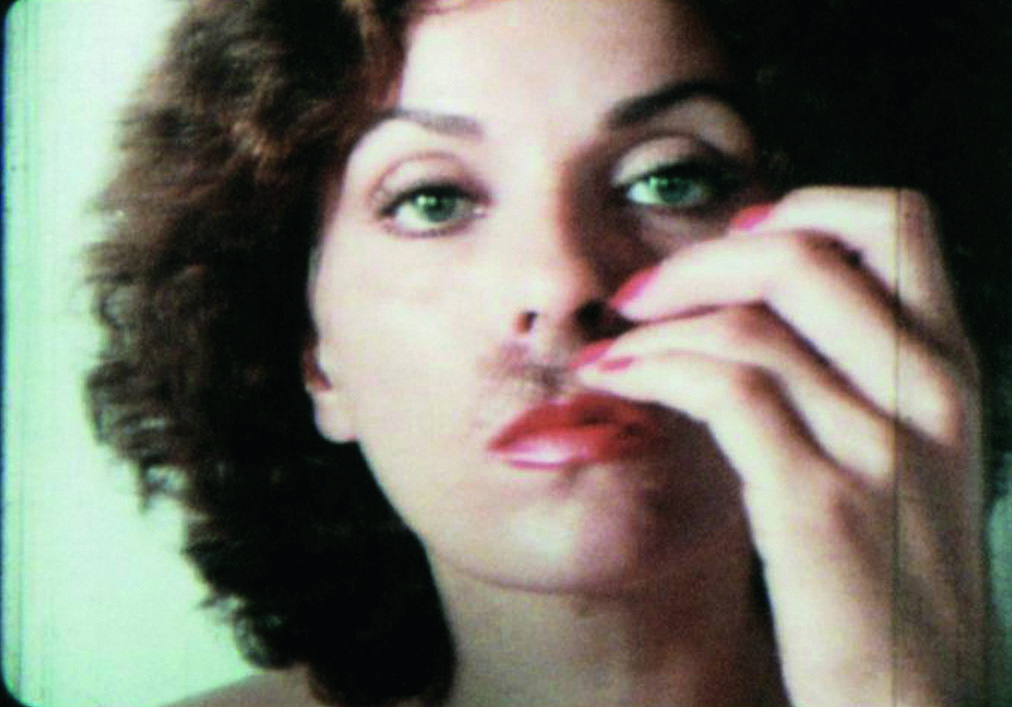
Original: VP_200001_254066_AEC_PRX_2020_VALIEEXPORT_9_2922544.jpg | 1012 * 707px | 251.9 KB | VALIE EXPORT, Unsichtbare Gegner (Invisible Adversaries), 1976
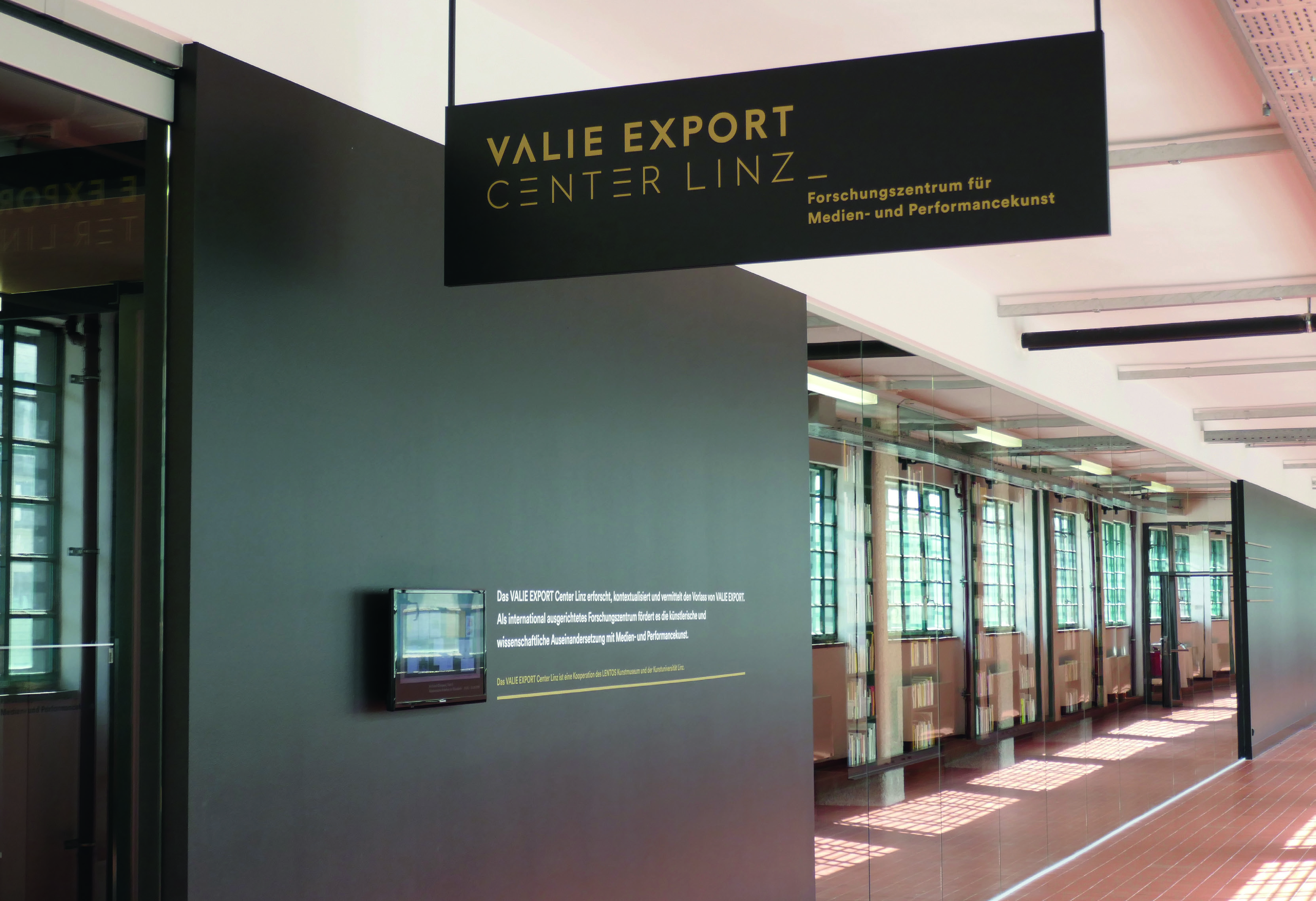
Original: VP_200001_254066_AEC_PRX_2020_VALIEEXPORTcenter_2922552.jpg | 3325 * 2277px | 1.5 MB | VALIE EXPORT Center Linz, 2019 | Dagmar Schink, 2019

Original: VP_200001_254066_AEC_PRX_2020_VALIEEXPORTexhibition_2922554.jpg | 3977 * 1202px | 2.0 MB | Ausstellungsansicht / exhibition view VALIE EXPORT. Das Archiv als Ort künstlerischer Forschung, poster wall, LENTOS Kunstmuseum. | Violetta Wakolbinger, 2017
Visionary Pioneer of Feminist Media Art 2020
In its fifth edition, the Austrian filmmaker, media artist, and performance artist VALIE EXPORT has been selected as the recipient of Prix Ars Electronica‘s Golden Nica for Visionary Pioneer of Feminist Media Art 2020. VALIE EXPORT stands for a consistent feminist-political stance and its like-minded counterpart in (media) art. She has created a trend-setting connection between performance, public space, and media representation and has participated in major exhibitions and taught at renowned institutions such as the Art Institute in San Francisco, the University of Wisconsin, Milwaukee/USA, the Berlin University of the Arts, and the Academy of Media Arts Cologne. VALIE EXPORT is one of the most important and successful international pioneers of feminist media art and is being honored with this award for her impressive life’s work.
VALIE EXPORT
I invent myself, therefore I am.
With the selection of her pseudonym in 1967, VALIE EXPORT expressed a self-conception that aimed at exporting itself as well as her thoughts and ideas.¹ With this, she created her own identity. The notion of extension, of expansion, which is evident in all of her works, was also established already at this time, becoming a determining factor in her oeuvre.“ One of the first steps was to create an alias as a concept, and the cigarette package was also the first object of my artistic career.” ²
The artistic production of VALIE EXPORT now spans more than five decades and represents an extensive and diverse oeuvre ranging from actions, scripts, film and video works, photographs, installations, and art objects to performances, sculptures, texts, and drawings. Curatorial projects such as exhibitions, screenings, and symposia as well as her readings and lectures enrich VALIE EXPORT’s means of expression.
VALIE EXPORT utilizes her body, the female body, in order to criticize the male gaze. With the TAPP UND TASTKINO (TOUCHCINEMA) (1968), she activated the audience, confronting it with an actual woman instead of a depiction of one. She thus illustrated her idea of “expanded cinema,” in which the film is produced without celluloid, and expanded the concept of the screen by becoming the projection surface herself. The involvement of the audience and the active eye contact with the artist facilitated a reinterpretation of the role of women in cinema and in the social structure.
“I came into contact with feminism through my experiences, because as a female artist I was largely ignored not by fellow artists but by audiences. They always directed questions to the film-makers. And I thought, what is that about? After all, these are my films. Back at the time of the 1968 movement I was already wondering what kind of art a female artist would have to show in order to be seen and noticed. I realized that people had no idea about female artists. This is why I also studied art history, but also explored the question of how the role of women in our society is determined.”³
In the 1970s, VALIE EXPORT investigated gender roles through the medium of photo collages. Based on models by great masters from art history, it was clear what position was expected from a woman—a position difficult to assume not only in a physical sense. VALIE EXPORT humorously transformed these idealized attributes to daily life.
With unequivocal words, VALIE EXPORT highlights the difference between men and women in society as well as in the world of art. In 1972, the artist wrote a manifesto with the title WOMEN’S ART on the occasion of the exhibition MAGNA. Feminismus: Kunst und Kreativität, which she conceived and in which only women participated. Once again VALIE EXPORT was ahead of her time and her concept initially attracted little interest. Only in 1975 was she able to present her project in a modified form at Vienna’s Galerie nächst St. Stephan as part of the International Women’s Year, with Austrian female artists and a supporting program featuring international guests. It was the first art symposium on feminism in Europe.
The above-mentioned manifesto begins with the statement:“THE POSITION OF ART IN THE WOMEN’S MOVEMENT IS THE POSITION OF THE WOMAN IN THE ART MOVEMENT. THE HISTORY OF WOMAN IS THE HISTORY OF MAN, because man has defined the image of woman for both man and woman. men create and control the social and communication media such as science and art, word and image, fashion and architecture, social interaction and division of labor. men have projected their image of woman onto these media, and it was in accordance with these medial patterns that they shaped women and women shaped themselves. if reality is a social construction and men its engineers, we are dealing with a male reality. women have not yet come to themselves, because they have not had a chance to speak insofar as they had no access to the media. let women speak so that they can find themselves; this is what I ask for in order to achieve a self-defined image of ourselves and thus a different view of the social function of women. we women must participate in the construction of reality via the building stones of media communication.”⁴
It is this attitude, one of participating in the construction of reality from a position of equality, that guides VALIE EXPORT in her actions. Self-empowerment plays a crucial role in this regard and has led to an exploration of the possibilities of artistic expression with contemporary media.
Since 1968 VALIE EXPORT has developed expanded cinema actions that require both an active screen and an active audience and, through technical means, widen the field of vision so far that they dissolve the separate entity of both the cinema and of its medium.
“Expanded Cinema was also about depicting and breaking down power structures, or, as they used to say: decoding and deconstructing.”⁵
VALIE EXPORT experiments with the perception and experience of space by applying the closed-circuit technique and expanded cinema with its intermedia techniques to her performances and installations. Reality and its medial representation become visible to the spectator simultaneously, while they nonetheless constitute different representations. Through the instant transfer of the image material to monitors, the editing tools available at the mixing desk, and by means of camera angles, the medium of video gives recipients the chance to observe many perspectives at the same time. Choreographed and staged by the artist, superimpositions of body, space, time, and motion are achieved—and an environment emerges.
The artist’s exploration of conceptual photography was reflected, among other things, in the Körperkonfigurationen (Body Configurations) that she created between 1972 and 1982. These themes revolve around the relationship of the body to its environment, to its surrounding architecture. The continuation of this exploration manifested itself beginning in the late 1980s in works that were further developed through the use of computer programs.
“It’s not about distorting the photograph or the model but rather about using the computer to create new spaces, to make new statements. With the computer, I go one step further: I “mediatize;” I use a medium intermediately in order to place the body in a configuration, to expand it. The computer is merely a tool in this process. Every medium is an extension of the body, and I have always used the media to this end in my body art. The furthermost extension of the body is that via the electronic medium of television, where a body is seen on a million different screens at the same time.”⁶
In the early 1970s, the medium of television—as an expansion of the scope of action in a technical sense and with regard to new audience segments—inspired VALIE EXPORT to new artistic explorations. Her 1970 TV action FACING A FAMILY shows in a self-referential manner a generic family watching TV, being observed at the same time by another equally generic family. Her television works from the 1980s utilized the medium as a tool for conveying information. The subject matter of Das Bewaffnete Auge. VALIE EXPORT im Dialog mit der Filmavantgarde (The Armed Eye—VALIE EXPORT in a Dialogue with the Film Avant-Garde) (1984) and Aktionskunst International. Dokumente zum Internationalen Aktionismus (Action Art International. Documents on International Action-ism) (1989) resembles a lecture series revolving around art history and film and media theory.
VALIE EXPORT’s first of three feature films, Unsichtbare Gegner (Invisible Adversaries) (1976), makes use of some of her early works. Photogra-phy, performance, and video are incorporated into the story of a woman who increasingly feels threatened by an invisible power. Menschenfrauen (Human Females) (1979) examines the social conditions of women through four protagonists, whose attempt to break out of their appointed social roles is visualized skillfully and artistically by VALIE EXPORT. In the film Die Praxis der Liebe (The Practice of Love) (1984), VALIE EXPORT translates her experiences from the avantgarde genre into a thriller that revolves around dependence and abysses. VALIE EXPORT shows her cinematic works with great success in exhibitions and at international festivals, and can position her experimental works both in the projection room of the cinema and in the institutional space of a museum or gallery. In 1968, VALIE EXPORT co-founded the Austrian Filmmakers Cooperative, today called the Austria Film Coop, in order to establish a distribution system for independent Austrian films in this country and abroad. Since the 1980s, VALIE EXPORT has distinguished herself not only through her artistic output but also through her international teaching activities at institutions including the University of Wisconsin-Milwaukee, the HdK (Berlin University of the Arts), the Academy of Media Arts Cologne, and the Salzburg International Summer Academy of Fine Arts.
She has also given numerous lectures and taught courses dealing with a thematically broad range of performance and experimental film works as well as the connections between the artistic practice of the avantgarde—including her own—and feminism, psychoanalysis, architecture, and ethnology.In 1985, ten years after MAGNA, VALIE EXPORT, along with Silvia Eiblmayr and Cathrin Pichler, mounted Kunst mit Eigen-Sinn, an internationally acclaimed exhibition focusing on current works by female artists, accompanied again by a symposium and a selection of video works. For the 1991 Wiener Festwochen festival, she organized an international symposium on the topic of Ent-Fesselung der Geschlechter, and in 2009, VALIE EXPORT served as co-commissioner, together with Silvia Eiblmayr, of the Austrian Pavilion at the Venice Biennale. For the project Bilder der Berührungen (1997/98), VALIE EXPORT, along with Syntax/Köln, was awarded the first CD-ROM prize at the Videonale Bonn. This compilation was based on the conceptual transfer of a catalogue into the new format of a multimedia CD-ROM, which broke new ground in terms of artistic work and is to be seen as an independent work and means of expression. On the CD-ROM, sixteen videos and a number of serial photographs are joined with the experimental film Syntagma (1983).
The use of a technology from the medical field enabled VALIE EXPORT to broaden and literally deepen her examination of the voice as a medium, as a carrier of information, and as a political issue. Her performance at the 2007 Venice Biennale showed the technical apparatus of the voice, the place of production of letters and sounds. VALIE EXPORT is concerned with the power of the voice, used and abused by people in influential (political) positions. Last but not least, it is also about the self-empowerment of women who raise their voices to make themselves heard in asserting their concerns, demands, and self-determination. This interest began in 1969 with the project TON-FILM (Sound Film) and has accompanied VALIE EXPORT ever since. It has been implemented in various formats defined by the artist: as a multi-channel video installation, as a body-communication-action and expanded film, as a performance, and as an intermedial stage play.
Since the beginning of her artistic activities in the late 1960s, VALIE EXPORT has not only created a comprehensive body of work but has also assembled a substantial archive. The spectrum of mate-rials ranges from initial concept ideas, accompanying research, sketches and preparatory studies, finalized submission documents, and mediating texts to correspondences, lectures, and reviews of the subjects she has dealt with and works she has realized.
In 2015, the Linz-born artist turned this archive over to the VALIE EXPORT Center Linz, which is operated as a cooperation between the City of Linz, the LENTOS Kunstmuseum Linz, and the University of Art and Design Linz. The VALIE EXPORT Center Linz appraises, studies, contextualizes, and mediates the premature legacy of VALIE EXPORT.
As part of research work at the VALIE EXPORT Center Linz, a bilingual edition of the unfinished script Der virtuelle Körper. Vom Prothesenkörper zum postbiologischen Körper (The Virtual Body. From the Prosthetic to the Post-biological Body), which VALIE EXPORT wrote at the end of the 1990s, has recently been published by the Verlag der Buchhandlung Walther König. It was edited by Sabine Folie (director of the VALIE EXPORT Center Linz) and Marius Babias (director of the Neuer Berliner Kunstverein, n.b.k.).⁷
“ This essayist documentary relates the history of the body as a journey of body representations and performances, from the earliest civilizations up until our digital era. It deals with body rituals, body movements, and body inscriptions in different cultures, with the civilized body in arts and science, and finally with the virtual, intangible body. It tells of replicants, hybrids, chimeras, avatars, aliens, robots, girl monsters, and cyber feminists—but also of modern genetic research and its dream of artificial life.”⁸
Many of her project ideas require great patience and perseverance on the part of the media and performance artist. VALIE EXPORT is, to borrow from the title of a ceremonial address by Marie-Luise Angerer at the VALIE EXPORT Center Linz, “A radical performance artist ahead of her time.”⁹
Text: Dagmar Schink
Translation: Resina Haslinger (Manifesto),Thomas Taborsky, and Douglas Deitemyer
Image credits if not stated otherwise: © VALIE EXPORT, Bildrecht Wien, 2020, Courtesy VALIE EXPORT: p. 138 – 141, 142 top and 143.
Premature legacy VALIE EXPORT, VALIE EXPORT Center / LENTOS Kunstmuseum Linz: p. 142 bottom
1 VALIE EXPORT in conversation with Felicitas Herrschaft, “Gespräch mit Valie Export, April 2004,” accessed June 26, 2020, http://www.fehe.org/index.php?id=572.
2 VALIE EXPORT in conversation with Brigitta Burger-Utzer and Sylvia Szely, “In der Erweiterung liegt die Möglichkeit zur Veränderung” (2006), in Sylvia Szely, EXPORT Lexikon. Chronologie der bewegten Bilder bei VALIE EXPORT (Vienna: Sonderzahl Verlag, 2007), p. 205.
3 Ibid., p. 208.
4 VALIE EXPORT, “Women’s Art. Ein Manifest” (1972), Neues Forum, No. 228, Jan. 1973, translation by Resina Haslinger by permission of the author.
5 VALIE EXPORT, “Die Polizei war gewarnt. Gespräch mit Valie Export über die Situation der Körperkunst,” Robert Fleck in Der Standard, Oct. 18, 1996, Album, p. 3.
6 VALIE EXPORT, “Jeder Zeit ihre Kunst,” an interview with Valie Export in Skytec, March 1990, p. 22.
7 VALIE EXPORT, Der virtuelle Körper. Vom Prothesenkörper zum postbiologischen Körper / The Virtual Body. From the Prosthetic to the Post-biological Body, Marius Babias and Sabine Folie, eds. (Cologne: Verlag der Buchhandlung Walther König, 2020).
8 VALIE EXPORT, Sprich Körper, 2011, synopsis for a later version of the script, VALIE EXPORT Center Linz, bundle 148.
9 Marie-Luise Angerer, “A radical performance artist ahead of her time,” ceremonial address at the opening of the VALIE EXPORT Center Linz on Nov. 10, 2017, borrowing from a quote by Andrea Juno in “The Female Image as Critique in the Films of Valie Export (Syntagma),” in Angry Women (RE/Search, No. 13), Andrea Juno and V. Vale, eds. (1991), p. 186.
In its fifth edition, the Austrian filmmaker, media artist, and performance artist VALIE EXPORT has been selected as the recipient of Prix Ars Electronica‘s Golden Nica for Visionary Pioneer of Feminist Media Art 2020. VALIE EXPORT stands for a consistent feminist-political stance and its like-minded counterpart in (media) art. She has created a trend-setting connection between performance, public space, and media representation and has participated in major exhibitions and taught at renowned institutions such as the Art Institute in San Francisco, the University of Wisconsin, Milwaukee/USA, the Berlin University of the Arts, and the Academy of Media Arts Cologne. VALIE EXPORT is one of the most important and successful international pioneers of feminist media art and is being honored with this award for her impressive life’s work.
VALIE EXPORT
I invent myself, therefore I am.
With the selection of her pseudonym in 1967, VALIE EXPORT expressed a self-conception that aimed at exporting itself as well as her thoughts and ideas.¹ With this, she created her own identity. The notion of extension, of expansion, which is evident in all of her works, was also established already at this time, becoming a determining factor in her oeuvre.“ One of the first steps was to create an alias as a concept, and the cigarette package was also the first object of my artistic career.” ²
The artistic production of VALIE EXPORT now spans more than five decades and represents an extensive and diverse oeuvre ranging from actions, scripts, film and video works, photographs, installations, and art objects to performances, sculptures, texts, and drawings. Curatorial projects such as exhibitions, screenings, and symposia as well as her readings and lectures enrich VALIE EXPORT’s means of expression.
VALIE EXPORT utilizes her body, the female body, in order to criticize the male gaze. With the TAPP UND TASTKINO (TOUCHCINEMA) (1968), she activated the audience, confronting it with an actual woman instead of a depiction of one. She thus illustrated her idea of “expanded cinema,” in which the film is produced without celluloid, and expanded the concept of the screen by becoming the projection surface herself. The involvement of the audience and the active eye contact with the artist facilitated a reinterpretation of the role of women in cinema and in the social structure.
“I came into contact with feminism through my experiences, because as a female artist I was largely ignored not by fellow artists but by audiences. They always directed questions to the film-makers. And I thought, what is that about? After all, these are my films. Back at the time of the 1968 movement I was already wondering what kind of art a female artist would have to show in order to be seen and noticed. I realized that people had no idea about female artists. This is why I also studied art history, but also explored the question of how the role of women in our society is determined.”³
In the 1970s, VALIE EXPORT investigated gender roles through the medium of photo collages. Based on models by great masters from art history, it was clear what position was expected from a woman—a position difficult to assume not only in a physical sense. VALIE EXPORT humorously transformed these idealized attributes to daily life.
With unequivocal words, VALIE EXPORT highlights the difference between men and women in society as well as in the world of art. In 1972, the artist wrote a manifesto with the title WOMEN’S ART on the occasion of the exhibition MAGNA. Feminismus: Kunst und Kreativität, which she conceived and in which only women participated. Once again VALIE EXPORT was ahead of her time and her concept initially attracted little interest. Only in 1975 was she able to present her project in a modified form at Vienna’s Galerie nächst St. Stephan as part of the International Women’s Year, with Austrian female artists and a supporting program featuring international guests. It was the first art symposium on feminism in Europe.
The above-mentioned manifesto begins with the statement:“THE POSITION OF ART IN THE WOMEN’S MOVEMENT IS THE POSITION OF THE WOMAN IN THE ART MOVEMENT. THE HISTORY OF WOMAN IS THE HISTORY OF MAN, because man has defined the image of woman for both man and woman. men create and control the social and communication media such as science and art, word and image, fashion and architecture, social interaction and division of labor. men have projected their image of woman onto these media, and it was in accordance with these medial patterns that they shaped women and women shaped themselves. if reality is a social construction and men its engineers, we are dealing with a male reality. women have not yet come to themselves, because they have not had a chance to speak insofar as they had no access to the media. let women speak so that they can find themselves; this is what I ask for in order to achieve a self-defined image of ourselves and thus a different view of the social function of women. we women must participate in the construction of reality via the building stones of media communication.”⁴
It is this attitude, one of participating in the construction of reality from a position of equality, that guides VALIE EXPORT in her actions. Self-empowerment plays a crucial role in this regard and has led to an exploration of the possibilities of artistic expression with contemporary media.
Since 1968 VALIE EXPORT has developed expanded cinema actions that require both an active screen and an active audience and, through technical means, widen the field of vision so far that they dissolve the separate entity of both the cinema and of its medium.
“Expanded Cinema was also about depicting and breaking down power structures, or, as they used to say: decoding and deconstructing.”⁵
VALIE EXPORT experiments with the perception and experience of space by applying the closed-circuit technique and expanded cinema with its intermedia techniques to her performances and installations. Reality and its medial representation become visible to the spectator simultaneously, while they nonetheless constitute different representations. Through the instant transfer of the image material to monitors, the editing tools available at the mixing desk, and by means of camera angles, the medium of video gives recipients the chance to observe many perspectives at the same time. Choreographed and staged by the artist, superimpositions of body, space, time, and motion are achieved—and an environment emerges.
The artist’s exploration of conceptual photography was reflected, among other things, in the Körperkonfigurationen (Body Configurations) that she created between 1972 and 1982. These themes revolve around the relationship of the body to its environment, to its surrounding architecture. The continuation of this exploration manifested itself beginning in the late 1980s in works that were further developed through the use of computer programs.
“It’s not about distorting the photograph or the model but rather about using the computer to create new spaces, to make new statements. With the computer, I go one step further: I “mediatize;” I use a medium intermediately in order to place the body in a configuration, to expand it. The computer is merely a tool in this process. Every medium is an extension of the body, and I have always used the media to this end in my body art. The furthermost extension of the body is that via the electronic medium of television, where a body is seen on a million different screens at the same time.”⁶
In the early 1970s, the medium of television—as an expansion of the scope of action in a technical sense and with regard to new audience segments—inspired VALIE EXPORT to new artistic explorations. Her 1970 TV action FACING A FAMILY shows in a self-referential manner a generic family watching TV, being observed at the same time by another equally generic family. Her television works from the 1980s utilized the medium as a tool for conveying information. The subject matter of Das Bewaffnete Auge. VALIE EXPORT im Dialog mit der Filmavantgarde (The Armed Eye—VALIE EXPORT in a Dialogue with the Film Avant-Garde) (1984) and Aktionskunst International. Dokumente zum Internationalen Aktionismus (Action Art International. Documents on International Action-ism) (1989) resembles a lecture series revolving around art history and film and media theory.
VALIE EXPORT’s first of three feature films, Unsichtbare Gegner (Invisible Adversaries) (1976), makes use of some of her early works. Photogra-phy, performance, and video are incorporated into the story of a woman who increasingly feels threatened by an invisible power. Menschenfrauen (Human Females) (1979) examines the social conditions of women through four protagonists, whose attempt to break out of their appointed social roles is visualized skillfully and artistically by VALIE EXPORT. In the film Die Praxis der Liebe (The Practice of Love) (1984), VALIE EXPORT translates her experiences from the avantgarde genre into a thriller that revolves around dependence and abysses. VALIE EXPORT shows her cinematic works with great success in exhibitions and at international festivals, and can position her experimental works both in the projection room of the cinema and in the institutional space of a museum or gallery. In 1968, VALIE EXPORT co-founded the Austrian Filmmakers Cooperative, today called the Austria Film Coop, in order to establish a distribution system for independent Austrian films in this country and abroad. Since the 1980s, VALIE EXPORT has distinguished herself not only through her artistic output but also through her international teaching activities at institutions including the University of Wisconsin-Milwaukee, the HdK (Berlin University of the Arts), the Academy of Media Arts Cologne, and the Salzburg International Summer Academy of Fine Arts.
She has also given numerous lectures and taught courses dealing with a thematically broad range of performance and experimental film works as well as the connections between the artistic practice of the avantgarde—including her own—and feminism, psychoanalysis, architecture, and ethnology.In 1985, ten years after MAGNA, VALIE EXPORT, along with Silvia Eiblmayr and Cathrin Pichler, mounted Kunst mit Eigen-Sinn, an internationally acclaimed exhibition focusing on current works by female artists, accompanied again by a symposium and a selection of video works. For the 1991 Wiener Festwochen festival, she organized an international symposium on the topic of Ent-Fesselung der Geschlechter, and in 2009, VALIE EXPORT served as co-commissioner, together with Silvia Eiblmayr, of the Austrian Pavilion at the Venice Biennale. For the project Bilder der Berührungen (1997/98), VALIE EXPORT, along with Syntax/Köln, was awarded the first CD-ROM prize at the Videonale Bonn. This compilation was based on the conceptual transfer of a catalogue into the new format of a multimedia CD-ROM, which broke new ground in terms of artistic work and is to be seen as an independent work and means of expression. On the CD-ROM, sixteen videos and a number of serial photographs are joined with the experimental film Syntagma (1983).
The use of a technology from the medical field enabled VALIE EXPORT to broaden and literally deepen her examination of the voice as a medium, as a carrier of information, and as a political issue. Her performance at the 2007 Venice Biennale showed the technical apparatus of the voice, the place of production of letters and sounds. VALIE EXPORT is concerned with the power of the voice, used and abused by people in influential (political) positions. Last but not least, it is also about the self-empowerment of women who raise their voices to make themselves heard in asserting their concerns, demands, and self-determination. This interest began in 1969 with the project TON-FILM (Sound Film) and has accompanied VALIE EXPORT ever since. It has been implemented in various formats defined by the artist: as a multi-channel video installation, as a body-communication-action and expanded film, as a performance, and as an intermedial stage play.
Since the beginning of her artistic activities in the late 1960s, VALIE EXPORT has not only created a comprehensive body of work but has also assembled a substantial archive. The spectrum of mate-rials ranges from initial concept ideas, accompanying research, sketches and preparatory studies, finalized submission documents, and mediating texts to correspondences, lectures, and reviews of the subjects she has dealt with and works she has realized.
In 2015, the Linz-born artist turned this archive over to the VALIE EXPORT Center Linz, which is operated as a cooperation between the City of Linz, the LENTOS Kunstmuseum Linz, and the University of Art and Design Linz. The VALIE EXPORT Center Linz appraises, studies, contextualizes, and mediates the premature legacy of VALIE EXPORT.
As part of research work at the VALIE EXPORT Center Linz, a bilingual edition of the unfinished script Der virtuelle Körper. Vom Prothesenkörper zum postbiologischen Körper (The Virtual Body. From the Prosthetic to the Post-biological Body), which VALIE EXPORT wrote at the end of the 1990s, has recently been published by the Verlag der Buchhandlung Walther König. It was edited by Sabine Folie (director of the VALIE EXPORT Center Linz) and Marius Babias (director of the Neuer Berliner Kunstverein, n.b.k.).⁷
“ This essayist documentary relates the history of the body as a journey of body representations and performances, from the earliest civilizations up until our digital era. It deals with body rituals, body movements, and body inscriptions in different cultures, with the civilized body in arts and science, and finally with the virtual, intangible body. It tells of replicants, hybrids, chimeras, avatars, aliens, robots, girl monsters, and cyber feminists—but also of modern genetic research and its dream of artificial life.”⁸
Many of her project ideas require great patience and perseverance on the part of the media and performance artist. VALIE EXPORT is, to borrow from the title of a ceremonial address by Marie-Luise Angerer at the VALIE EXPORT Center Linz, “A radical performance artist ahead of her time.”⁹
Text: Dagmar Schink
Translation: Resina Haslinger (Manifesto),Thomas Taborsky, and Douglas Deitemyer
Image credits if not stated otherwise: © VALIE EXPORT, Bildrecht Wien, 2020, Courtesy VALIE EXPORT: p. 138 – 141, 142 top and 143.
Premature legacy VALIE EXPORT, VALIE EXPORT Center / LENTOS Kunstmuseum Linz: p. 142 bottom
1 VALIE EXPORT in conversation with Felicitas Herrschaft, “Gespräch mit Valie Export, April 2004,” accessed June 26, 2020, http://www.fehe.org/index.php?id=572.
2 VALIE EXPORT in conversation with Brigitta Burger-Utzer and Sylvia Szely, “In der Erweiterung liegt die Möglichkeit zur Veränderung” (2006), in Sylvia Szely, EXPORT Lexikon. Chronologie der bewegten Bilder bei VALIE EXPORT (Vienna: Sonderzahl Verlag, 2007), p. 205.
3 Ibid., p. 208.
4 VALIE EXPORT, “Women’s Art. Ein Manifest” (1972), Neues Forum, No. 228, Jan. 1973, translation by Resina Haslinger by permission of the author.
5 VALIE EXPORT, “Die Polizei war gewarnt. Gespräch mit Valie Export über die Situation der Körperkunst,” Robert Fleck in Der Standard, Oct. 18, 1996, Album, p. 3.
6 VALIE EXPORT, “Jeder Zeit ihre Kunst,” an interview with Valie Export in Skytec, March 1990, p. 22.
7 VALIE EXPORT, Der virtuelle Körper. Vom Prothesenkörper zum postbiologischen Körper / The Virtual Body. From the Prosthetic to the Post-biological Body, Marius Babias and Sabine Folie, eds. (Cologne: Verlag der Buchhandlung Walther König, 2020).
8 VALIE EXPORT, Sprich Körper, 2011, synopsis for a later version of the script, VALIE EXPORT Center Linz, bundle 148.
9 Marie-Luise Angerer, “A radical performance artist ahead of her time,” ceremonial address at the opening of the VALIE EXPORT Center Linz on Nov. 10, 2017, borrowing from a quote by Andrea Juno in “The Female Image as Critique in the Films of Valie Export (Syntagma),” in Angry Women (RE/Search, No. 13), Andrea Juno and V. Vale, eds. (1991), p. 186.
VALIE EXPORT was born as Waltraud Lehner in 1940 in Linz, where she attended the School for the Arts and Crafts. In 1964 she graduated from the HBLVA for Textile Industry in Vienna. Since 1967 she has gone by the name VALIE EXPORT, an artistic concept and logo. She works with a wide range of media and has attracted attention with actions in public spaces that belonged to the field of performance and to media art and were developed from a feminist perspective. VALIE EXPORT presents her work in international solo and group exhibitions.A co-founder of the Austrian Filmmakers Cooperative, she has participated in numerous film and video festivals all around the world. She began her curatorial activities in the 1970s, focusing on feminism and media art, and has taught at such institutions as the San Francisco Art Institute, the University of Wisconsin-Milwaukee/USA, and the Berlin University of the Arts. Until 2005 VALIE EXPORT held the professorship for Multimedia and Performance at the Academy of Media Arts Cologne. In addition to her international exhibition activities and participation in major exhibitions such as the Venice Biennale (1980) and documenta (1977, 2007), she was the co-commissioner for the Austrian Pavilion at the 2009 Venice Biennale.For her work to date, VALIE EXPORT has been awarded numerous accolades and prizes, including the Gustav Klimt Prize (1998), the Oskar Kokoschka Prize (2000), the Alfred Kubin Prize (2000), the Austrian Decoration of Honour for Science and Art (2005), the Yoko Ono Lennon Courage Award for the Arts (2014, together with Laurie Anderson, Marianne Faithfull, and Gustav Metzger), the Austrian Women’s Lifetime Achieve-ment Award (2015), and the Great Golden Decoration of the City of Linz for Services to Culture. In 2019, VALIE EXPORT was the recipient of the best-endowed European art award, the Roswitha Haftmann Prize, for her pioneering feminist and media-reflexive works.


